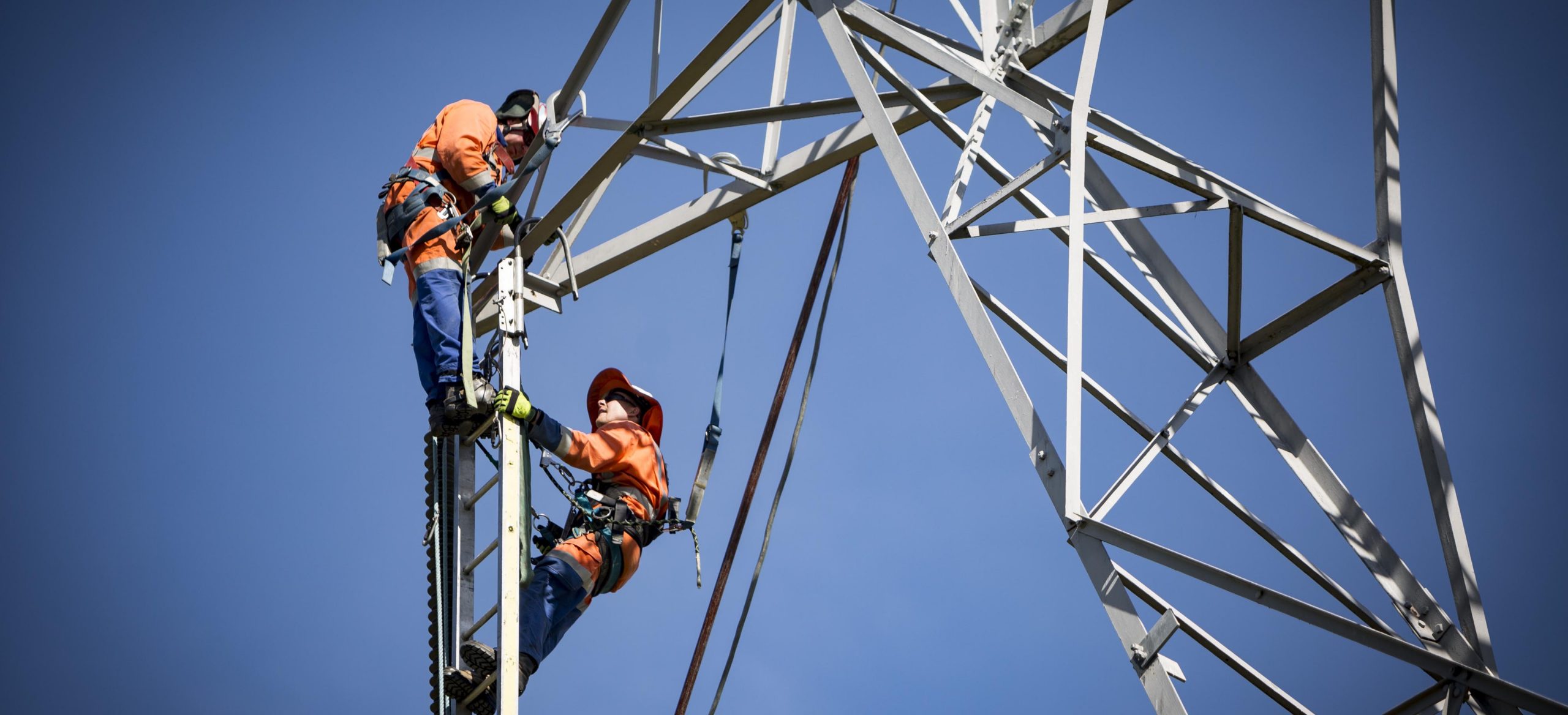The disruption caused by recent extreme weather has hit communities around the world, from record snow in California to worst-ever cyclones and flooding in New Zealand. And for storm crews charged with restoring power to affected areas, two things are critical: time and safety. Getting the grid back up and working as fast as possible is vital for co-ordinating recovery efforts, keeping businesses going and communicating with loved ones.
The trouble is, storm crews have to rely on inefficient systems to co-ordinate their own response, which can slow operations by days – and also leave them exposed to greater risk. Recent events have shown the need for utilities providers to abandon misconceptions around the security of digital platforms and digitise their operations. Digital credentialling in particular has the power to dramatically speed up crews’ ability to restore power to stricken communities, as well as to ensure workers are kept safe.
Alex Wakeland, journeyman lineman for the International Brotherhood of Electrical Workers, which represents 775,000 utilities workers across the US and Canada, is keen to see an app developed by Kiwi digital credential specialist and Microsoft partner, JNCTN, adopted across the industry.
With crews coming from different areas, it’s essential to know colleagues are qualified and able to do the work to the right standard (or safely). As Alex says, however, “all the power company has to verify this at the moment is a piece of paper”. Trucks and equipment without up-to-date service records are another hazard, causing delays and safety issues. Meanwhile, a reliance on emailing credentials puts workers and businesses alike at risk of having important data stolen.
All this can dramatically hamper disaster recovery, taking time and resources communities need, while creating headaches for workers on our front lines.
This is exactly what the JNCTN platform and app can solve. Built in Microsoft Azure, the JNCTN app uses identity management technology to protect workers’ data and avoid fraud. Each individual using the app has their own digital credentials, including information about their training, recent work experience, driver’s licence and so on. A host of security tools such as Defender for Cloud, Microsoft Sentinel, Azure Privileged Identity Management and GitHub Advanced Security scans ensure the information is tamper-proof.
Yet security concerns are hampering the wider adoption of digital credentialling, often because of misperceptions that paper is more secure than “shared” platforms. While a storm crew response lead might be responsible for 25 crews, they often only have one map showing what they need to be working on, covering a vast area. No power company wants maps of junction boxes, switches, sectionalisers and other key infrastructure falling into the wrong hands – so crew members have to resort to crude hand-drawn copies, spending up to a day inspecting the line to find the correct areas to work on.
A digital credential platform like JNCTN’s could provide temporary access to a digital map, something far more secure and efficient. Gone are the days when the only way to secure your data was to keep it in on-premises datacentres. Governments around the world, including New Zealand’s, are fast recognising the importance of cloud-based solutions like this to enable scalability and responsiveness, underpinned by secure technologies that have been developed, outsourced and continuously upgraded by teams of global professionals.
The JNCTN platform is already being used by the Ministry of Business, Innovation and Employment and electrical industry safety association, StayLive, which has rolled out the platform to manage crews at some of the country’s largest gentailers. A StayLive study revealed it could save a collective $10 million per year by reducing the time and resource put into manual updates and processing training records. Workers used to use something called a Green Book, a paper passbook containing information about the training they’d received, which had to be manually stamped and verified when they arrived at each site and updated when courses had been taken, creating a lot of work and inevitably, inconsistencies.
As Jarrod Bowler, Group Manager Safety and Wellness at Genesis Energy, puts it: “With the JNCTN app, there are no more spreadsheets that need to be maintained and uploaded by course administrators. You just scan the app via a QR code at your course and the information is automatically available in the cloud, then you can scan in on site straight away.”
The recent weather events have shown there’s a huge opportunity for the companies who manage the world’s storm response and critical infrastructure to take the same view on security, saving critical time for power companies, workers and emergency response co-ordinators. Imagine if everyone was able to share their credentials via a central digital system. Workers could travel anywhere around the world to help communities after disasters, as Fijian and Australian support crews did in New Zealand after Cyclone Gabrielle. Organisations in those countries wouldn’t have to wait for paper credentials to be verified, and they could automatically share network maps with the approved workers so they could hit the ground running.
Alan Walker has over a decade of supporting disaster response both in New Zealand and internationally. He says the most pressing task in the immediate aftermath of a disaster is to conduct needs analysis, so that response efforts can be appropriately prioritised and resourced.
As he observes: “Theoretically, any individual could populate a database via a digital platform with their personal level of disaster preparedness. Disaster response agencies aggregating this information in the immediate aftermath of a disaster could integrate this data with other available information to conduct much quicker and more reliable risk assessment and conduct informed needs analysis even before impacted communities have been physically surveyed.”
A single, secure data entry point with automatic updates, protected by cloud technology, is better for workers, utilities companies, safety and costs. And ultimately, helps us all get back on our feet faster.

